Minor Land Carriers. Unsung Heroes Part of 3
On the very first day of the war, the modest, to some extent even elegant passenger ship “Zarnitsa” was mobilized. Launched this ship, like its "Sistership", was in 1927 at the Andrew Marty Odessa Shipyard. The future Zarnitsa was single-screw and single-deck with a tonnage of 353. German diesel company Benz power 220 hp provided speed in 10 nodes. With a length of 32,3 m, a width of 5,5 m and a draft of 2,1 m, the Zarnitsa could take on board more than 200 passengers.
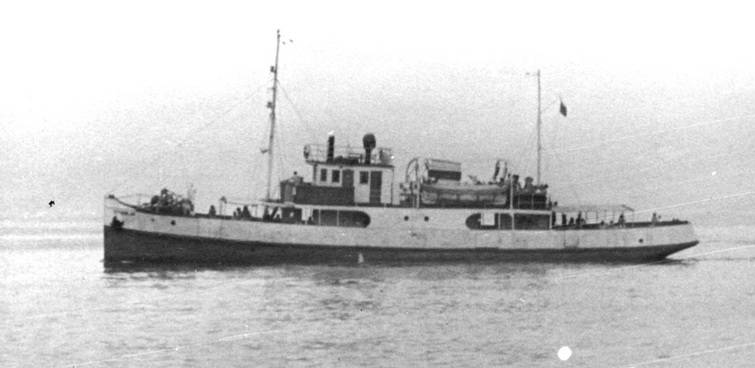
Motor ship "Zarnitsa" ("Lukomsky")
The new all-metal motor ship was handed over to the customer (Sovtorgflot) in 1929 year and was assigned to the Yalta port. In 1935, the “Zarnitsa” was renamed, calling in honor of the hero of the civil war and the port commander Yalta, Peter Ilyich Lukomsky. So did the cruise ship of ordinary passengers and joyful vacationers, demonstrating the beauty of the coast, because was originally designed for coastal marine areas.
Already on June 27, 1941, Lukomsky began to be converted into a mine layer. In less than half a month, the newborn minzag became part of the Black Sea Fleet. The ship was armed with 2 45-mm 21-K guns, 2 12,7-mm DShK machine guns and ten mines. The crew amounted to 33 sailors. At first, Lukomsky served as part of the Odessa Navy. In March 42nd during an enemy raid aviation the minzag failed, but by the summer it was lifted from the ground and repaired, but he was not destined to do his mine work. From the 42nd to the 43rd “Lukomsky” was engaged in the transportation of wounded from the Caucasian ports from Novorossiysk to Sochi. During its short service, the ship completed up to 50 evacorees and saved 2807 people (of which 1826 were bedridden and severely wounded).
January 3, 1945 the ship was disarmed and returned to civilian the fleet. Lukomsky began to walk along the routes Odessa-Luzanovka and Odessa-Chernomorka. In the 65th, the tired ship was sent for disassembly.
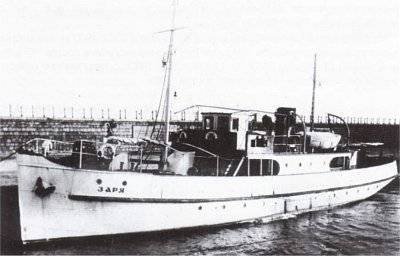
Motor ship "Zarya"
The Sistership of the Lukomsky (formerly Zarnitsa) motor ship was also commissioned in 1929, under the name Zarya. Only “Zarya” went far from its place of birth, it was attributed to Sochi shipping company. This pleasure boat was also mobilized and converted into a minzag. And again, it was used for the direct “mine” purpose only during the first months of the war, and even before its brother joined the ranks of maritime transport. He participated in the Kerch-Feodosia landing operation, and then transported the wounded along the route of the Caucasian ports. The motor ship made 21 evacoreys, transporting 1400 people, including 645 seriously injured.
“Zare” was not prepared for the peaceful death of “Lukomsky”. 5 March 1943, the minzag Zarya has once again left Gelendzhik to deliver cargo to the Small Land bridgehead. In the area of Myskhako, a minelayer exploded on a mine (a cruel joke of fate, although it does not hold others) and sank at a depth of about 40-45 meters.
In general, during the war years, the Sochi shipping company was practically cleaned for the needs of the army, which is understandable. Following the Zarya, 8 passenger boats and two passenger ships, the Ost and the Nord, went to the Black Sea Fleet.
Both ships began to be built in 1932 by order of Sovtorgflot at the Odessa Ship Repair Plant already mentioned above. The ships were of the same type - single-screw and single-deck with a displacement of 285 tons. Length - 37,5 m, width - 6,6 m, draft - 2,3 m. But, unlike older comrades (“Zarnitsa” and “Dawn”), these boats installed a Benz diesel with a power of 375 hp, which made it possible to drive in 13 nodes. Passenger capacity was about 300 people.
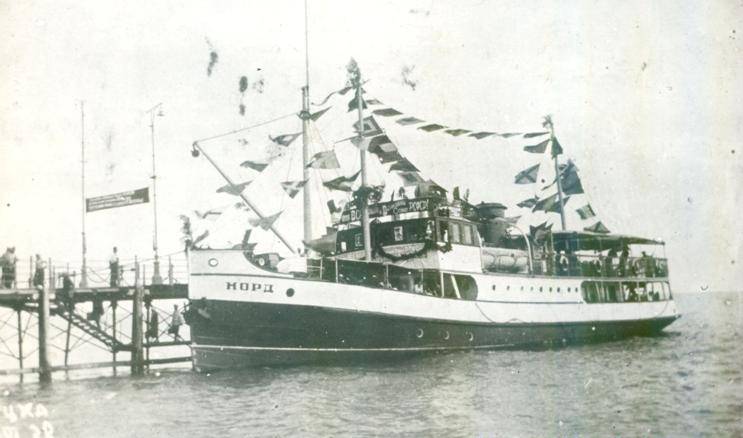
"Nord" invites tourists
Holiday pleasure boats cruised on local lines off the picturesque shores of the Caucasus. When looking at the photo of the ship “Ost” you catch yourself thinking that on the deck for the entourage there is not enough of the young lady in a wide-brimmed hat with a veil. But in June, both vessels took the visor and were mobilized. "Nord" and "Ost" converted into minesweepers. The ships received two 45-mm guns, two DShK machine-guns, and, of course, were equipped with trawls. The crews of the "new" minesweepers numbered 35 people. In addition, the "Nord" became "T-513", and the "Ost" - "T-514".
T-513 "Nord" almost immediately began to combine the duties of the minesweeper with the work of a transport worker, was repeatedly involved as a landing ship. Member of the Kerch-Feodosia operation. From 1942, the minesweeper began to conduct regular evacuation flights between Caucasian ports, of course, to the Myskhako area. In total, Nord made 76 for many rescue voyages, evacuating 6,5 to thousands of people.
As soon as the war ended, the Nord was returned to the Sochi Shipping Company. In the middle of the 50-s the ship again pleased tourists on the Tuapse-Sochi-Gagra line. In 1968, a veteran ship that saw blood on its deck was scrapped.
T-514 "Ost" was much less fortunate. Initially, the newly minesweeper went through the same “school”. Participation in the Kerch-Feodosia landing operation, regular evacoreys, whose number reached 30, during which the minesweeper saved 2250 people, of whom 874 was seriously injured.
From the very beginning of the formation of the small-land bridgehead "Ost" threw on the supply of troops and ammunition replenishment. 4 (possibly 5) March 1943 of the year in 18: 30, i.e. as it got dark, the minesweeper came out of Gelendzhik and headed for Myskhako with a load of food and ammunition. But as soon as he passed the village of Kabardinka, it hit a German magnetic mine and sank.
That is sad story those who were originally created for the joy of tourists and the southern sun.
To be continued ...
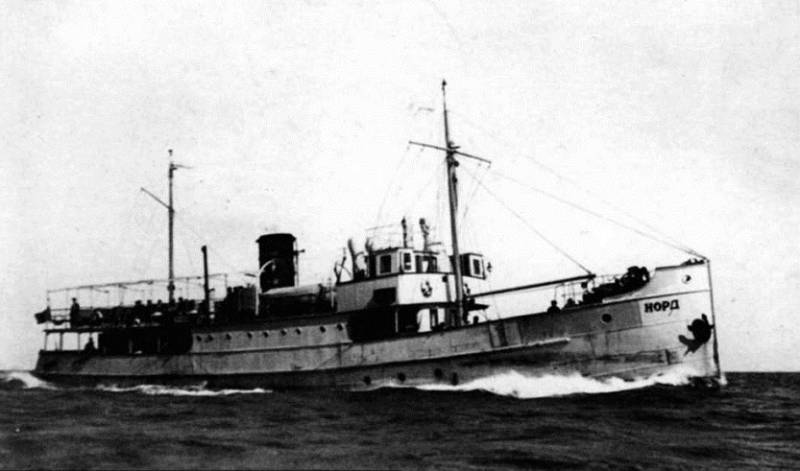
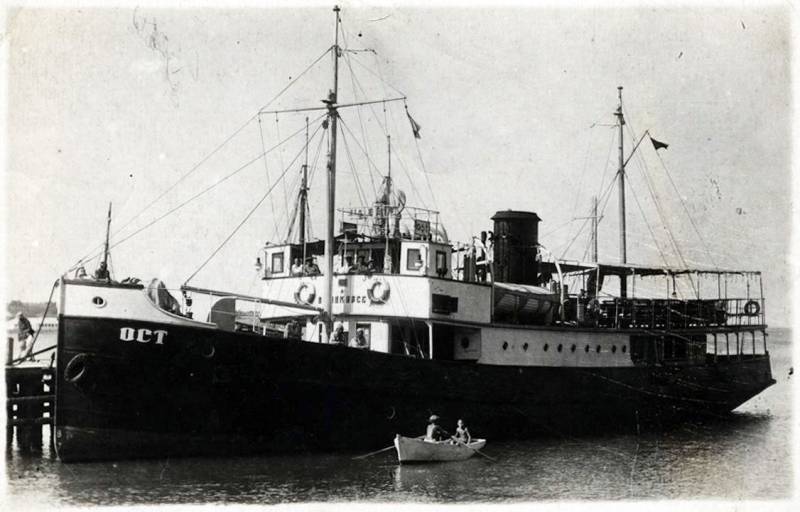
Information